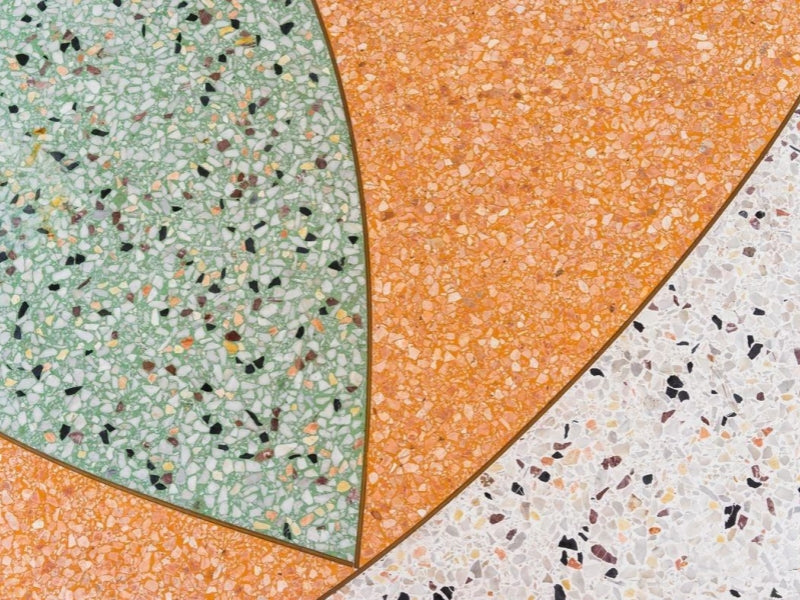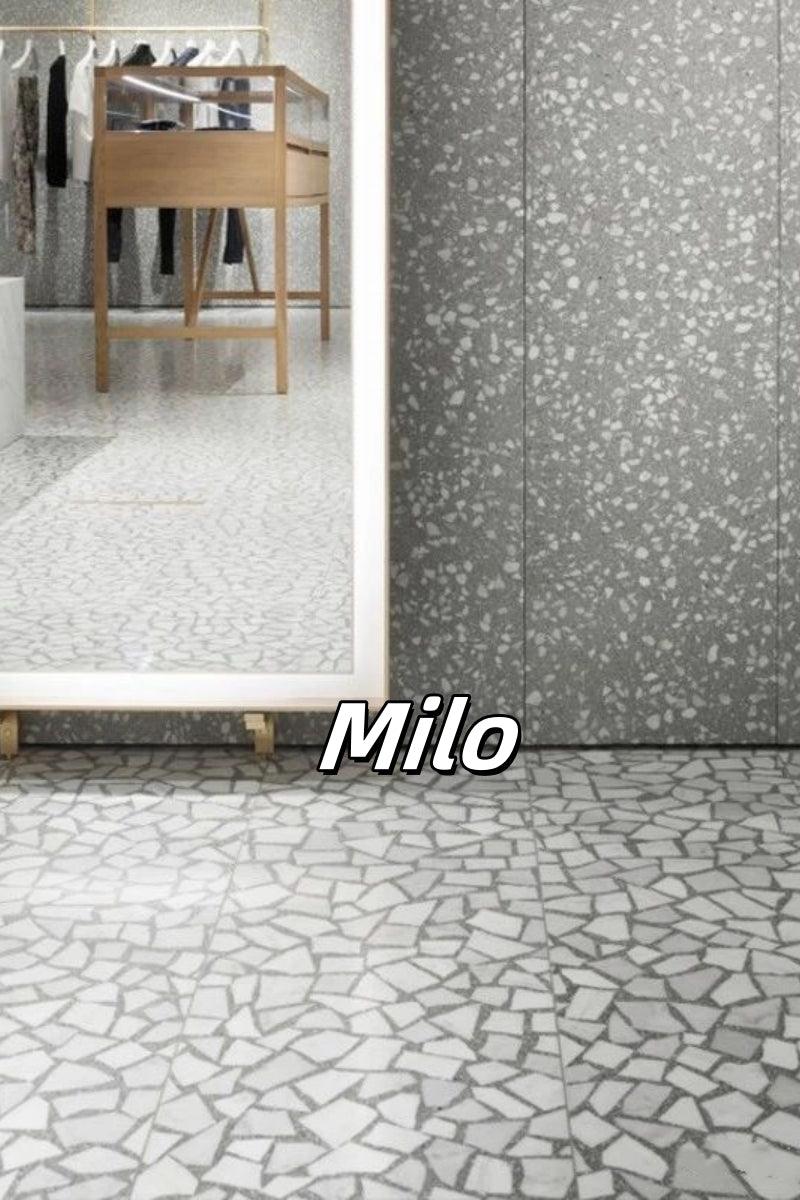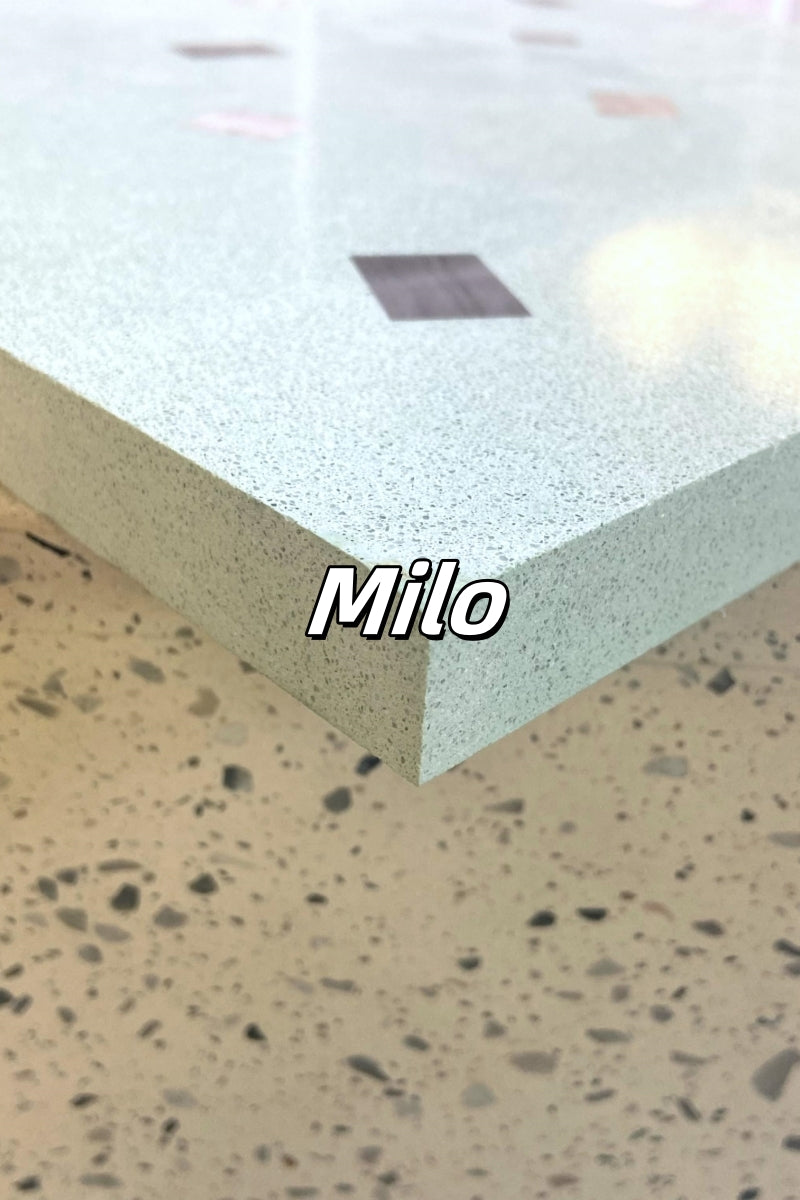View:77250Time:31 Mar,2025
Terrazzo
In this series, we put key home design elements in the spotlight, exploring everything from the latest innovations and placement ideas to practical tips for making it work in your space. Terrazzo tiles are making waves in bathroom design right now, with their unique texture and stunning look, and in this post we’ll discuss how and where you can use them in your own home.
Terrazzo: Historical Background
In fact, it’s been around for ages — examples of terrazzo flooring have even been found in mosaics in ancient Egypt — and has been used across the globe for centuries. Its more modern incarnation is usually attributed to 18th-century Venice, where it was used to decorate workers’ homes (a cheaper alternative to marble).
Terrazzo reached the height of its popularity in 20th-century Europe during the 1920s/1930s and post-war reconstruction from the 1950s to the 1970s, also due to its relatively low cost. The 1920s also saw beneficial advances in technology, bringing better tools and production methods that made terrazzo flooring and terrazzo tile a popular choice in the United States, where it was used to create upscale Art Deco and Mod designs.
But by the 1980s, homeowners were wealthier and had more choices; terrazzo gradually lost its popularity as carpet, hardwood, and tile took precedence.

Today terrazzo flooring is most often used in commercial and institutional spaces. In the past few years, designers have begun to realize the potential of terrazzo as a viable alternative to cold stone floors and busy tile, yet one that has the same streamlined minimalism of concrete, but with a more textured and interesting profile; plus, there’s the advantage of a wide variety of colors to choose from! Terrazzo can be tiled or made from crushed marble chips embedded in concrete. It has a unique look, and some terrazzo can be multi-colored, with blues, reds, yellows, and other colors mixed in, or it can be a single color. Tile can also come in a variety of colors, including blues, greens, and a more subtle look like black specks in a white tile. It can also be made into intricate patterns, terrazzo can be anything you want it to be!


What is Terrazzo Tile?
‧ Terrazzo is a composite building material made by combining aggregates like marble or stone with concrete or epoxy resin.
‧ Depending on the type of material used, terrazzo can be used both indoors and outdoors.
‧ Terrazzo is either cast in place (like concrete) (i.e. in your home) or you can use terrazzo tiles instead.
Note: There is a type of cement tile called Granito that is made using a similar technique to terrazzo and is therefore often referred to as terrazzo tile. Terrazzo tiles can also come in solid blocks, or like these cement versions, also called Granito

Terrazzo Installation Methods
Terrazzo installation in your home is definitely not a DIY option, especially if you want the terrazzo to be cast in place. You will need to consult and work with an experienced installation team to get the best results. A competent installer will understand the different installation methods and be able to advise you on the best installation method for your project.
Here is a brief overview of the three main cast-in-place methods:
Thinset Terrazzo
This is a layer of epoxy terrazzo about 3/8 thick that is poured over a concrete substrate. It is the lightest weight terrazzo that can be installed over an existing concrete or plywood subfloor; it has the largest range of color options and is least likely to crack (because of the added flexibility of the epoxy). However, it should only be used indoors, as the top layer can flake off if exposed to too much light. Also note that the solvents used in epoxy can cause allergic reactions in some people.
Sand-Cushion Terrazzo
This is a more traditional terrazzo method, where an initial cement base is laid, then a layer of sand is applied before a cement-based terrazzo mix is poured on top. The sand layer allows for some movement, minimizing the potential for cracks; however, this method creates a very heavy floor and is only suitable for new construction, as you must incorporate a concrete base during construction. This method can also be used for interior floors.
Thinset Terrazzo is the most popular method for interior remodeling, as it works best with interior finishes and different subfloors.

Monolithic Terrazzo
Here cement-based terrazzo is poured directly onto the concrete subfloor. This method can be used for both interior and exterior applications and can be used over existing concrete subfloors — as long as they are level and in good repair. However, this method is not the best way to deal with potential cracks — especially for high-grade installations — and is primarily used in single-story, ground-floor construction.
Other cast-in-place terrazzo methods include Bonded Terrazzo, which is similar to Sand-Pad Terrazzo, Polyacrylate Terrazzo, which is a useful alternative in situations where epoxy-based terrazzo will not adhere, and Rustic Terrazzo, which is primarily used for exterior situations where a more solid surface texture is required.
Terrazzo Tile Flooring
Finally, using terrazzo tile is another way to install terrazzo in your home. Installation involves applying an adhesive and grout system, much like ceramic or porcelain tile. Professional installers can use a sanded and sealed surface to create a seamless look similar to poured terrazzo.
If you are looking for decorative panels for both indoor and outdoor use, Mosaic terrazzo is the perfect choice. Producing in one environment will make any area where it is installed more visually appealing. As long as you are careful and properly maintained, stones can remain beautiful for many years. Click here for details; Mosaic terrazzo More style information.
Copyright © Shenzhen Miluo Industrial Co., Ltd all rights reserved.Support:FHCMS